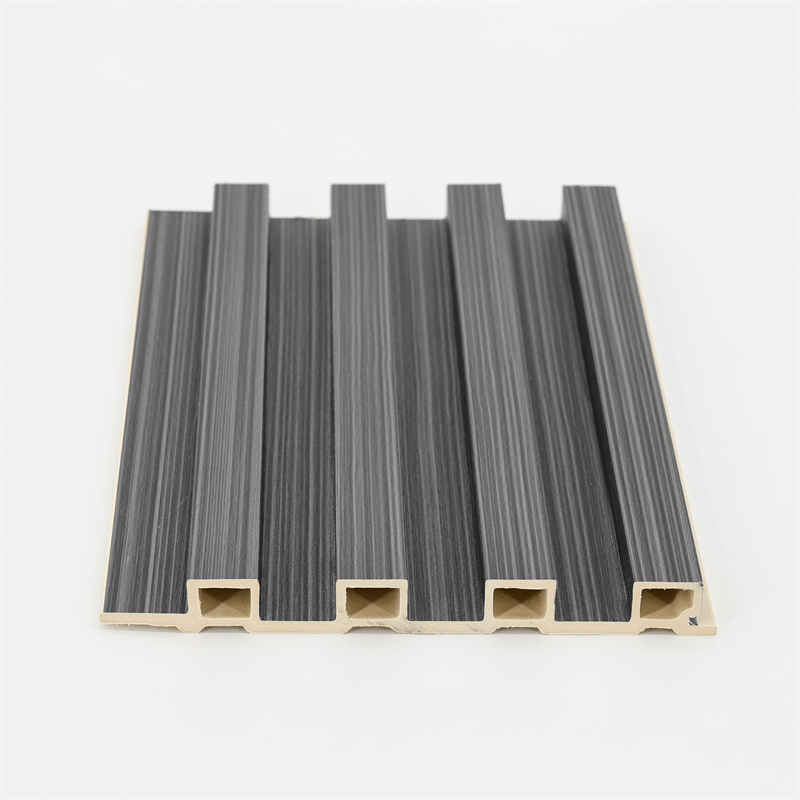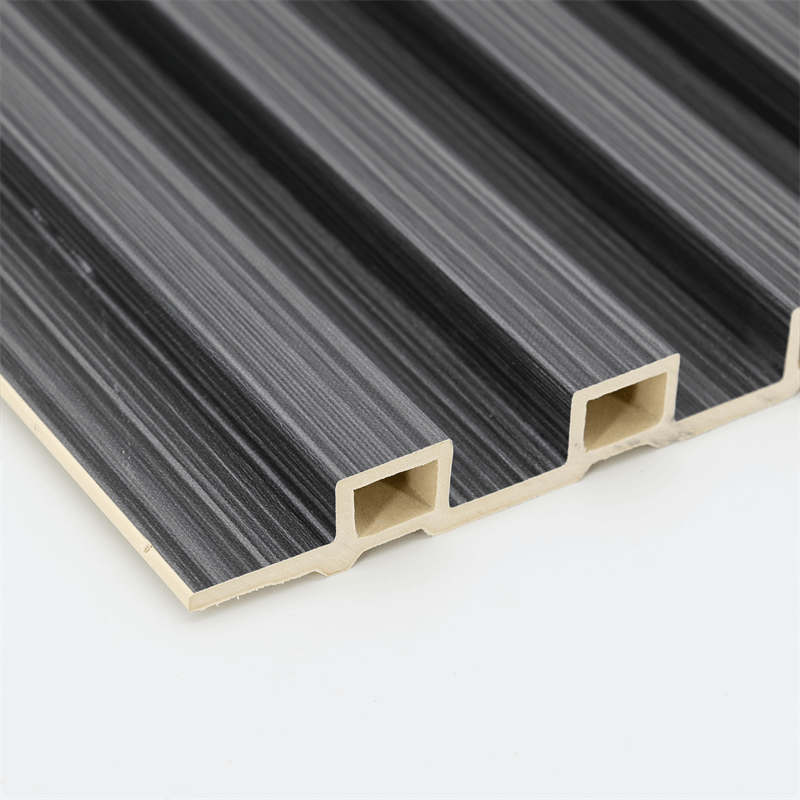Wood-plastic composite (WPC) wall panels have gained popularity in recent years due to their durability, versatility, and aesthetic appeal.
These panels are widely used in both residential and commercial applications, providing an alternative to traditional wood or plastic wall materials.
Understanding the manufacturing process of WPC wall panels can provide valuable insights into the composition, production methods, and advantages of this innovative building material.
This essay will delve into the manufacturing process of WPC wall panels, exploring key stages and techniques involved.
I. Raw Material Preparation
The manufacturing process of WPC wall panels begins with the careful selection and preparation of raw materials.
The primary components of WPC panels are wood fibers or flour and thermoplastic polymers. Wood fibers can be sourced from a variety of wood species, such as pine, oak, or bamboo.
These fibers are obtained through a mechanical milling process, resulting in a fine wood powder or flour.
The thermoplastic polymers commonly used in WPC production include polyethylene (PE), polypropylene (PP), and polyvinyl chloride (PVC). These polymers are often in the form of pellets or granules.
To achieve a consistent and homogenous mixture, the wood flour and thermoplastic polymers are blended together.
Various additives, such as coupling agents, stabilizers, and colorants, may also be included in the mixture to enhance specific properties of the final product.
The mixture is typically prepared in large-scale mixing equipment, ensuring a uniform distribution of the components.
II. Extrusion Process
Once the raw materials are prepared, the WPC wall panels undergo the extrusion process, a crucial step in their manufacturing.
Extrusion involves the use of specialized equipment, such as an extruder, to shape and form the WPC mixture into the desired profile.
The extruder consists of a barrel, a screw, and a die, which work together to melt and homogenize the mixture while exerting pressure.
The extrusion process begins with the feeding of the WPC mixture into the extruder’s hopper. The mixture is gradually pushed forward by the rotating screw within the barrel.
As the mixture progresses, it is subjected to heat and mechanical shear, resulting in the melting of the thermoplastic polymers and the bonding of the wood fibers.
The molten WPC material is then forced through a specially designed die, which determines the shape and dimensions of the wall panel profile.
During extrusion, the WPC mixture may also undergo additional processes, such as cooling and calibration.
Cooling helps solidify the molten material, ensuring dimensional stability, while calibration ensures the precise shape and thickness of the wall panel.
The extruded profiles are typically cut to the desired length using automated cutting equipment.
III. Surface Treatment and Finishing
After the extrusion process, the WPC wall panels may undergo various surface treatments and finishing techniques to enhance their appearance and performance.
Surface treatment involves the application of coatings, laminates, or veneers to the outer layer of the panel, providing protection against weathering, UV radiation, and moisture.
Coatings can be applied through spray or roll coating methods, using water-based or solvent-based formulations.
These coatings not only provide a protective layer but can also offer decorative effects, such as wood grain patterns or solid colors.
Laminates or veneers, made from thin sheets of wood or decorative films, can be bonded to the surface of the panel, further enhancing its aesthetic appeal.
In addition to surface treatments, the WPC wall panels may undergo finishing processes, such as sanding, embossing, or brushing.
Sanding helps smoothen the surface and remove any imperfections, while embossing or brushing can create textured or patterned finishes, resembling natural wood grains.
These finishing techniques contribute to the overall visual appeal of the WPC wall panels, making them an attractive choice for interior and exterior wall applications.
IV. Quality Control and Testing
Throughout the manufacturing process of WPC wall panels, quality control and testing procedures play a crucial role in ensuring the durability, safety, and performance of the final product.
Quality control begins with the careful monitoring of raw materials, ensuring their adherence to specific standards and specifications.
During extrusion, continuous monitoring of temperature, pressure, and material flow rate is carried out to ensure consistent and uniform product quality.
Samples are regularly collected from the production line for various tests, including mechanical properties, dimensional stability, and resistance to environmental factors.
Finished WPC wall panels undergo rigorous testing to assess their performance in real-world conditions.
These tests may include impact resistance, fire resistance, water absorption, and weathering resistance evaluations.
Compliance with industry standards and building codes is essential to ensure the suitability and reliability of the WPC panels for their intended applications.
The manufacturing process of WPC wall panels involves several key stages, from raw material preparation to quality control and testing.
Understanding this process provides insights into the composition, production methods, and advantages of WPC as a building material.
By carefully selecting and blending raw materials, employing extrusion techniques, applying surface treatments and finishing, and conducting thorough quality control, manufacturers can produce durable, versatile, and aesthetically pleasing WPC wall panels.
With their sustainable characteristics, low maintenance requirements, and resistance to moisture and insects, WPC wall panels continue to gain popularity as a viable alternative to traditional wall materials in various construction and design projects.



